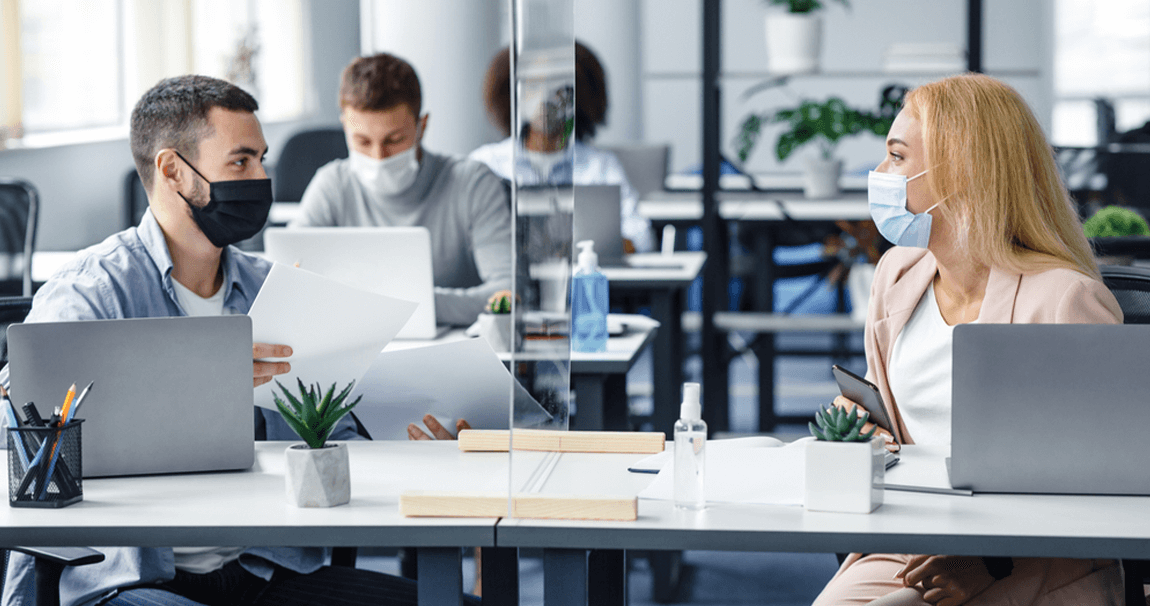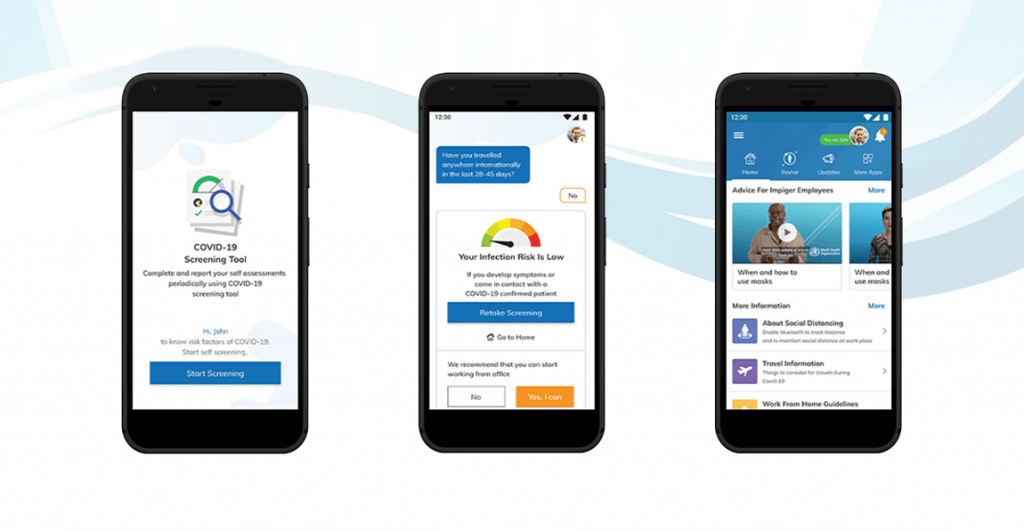Resources > Blogs
People1 Care Digital Solution: Return to Work Transition Strategies
February 11, 2022
Admin

After months of remote work because of COVID-19, businesses now have to convert back traditional workplaces for employees. However, business owners must navigate countless safety issues and uncertainties for the return to work post-covid.
In all practicality, there’s only so much an organization can do to keep an eye on daily operational activities. If, however, businesses want to adapt to new and changing safety guidelines, they will need a digital solution. Strategically, enterprises will have to become more flexible and cautious to manage return to work related issues safely and with minimal impact to the effectiveness of their employees.
Essential businesses don’t have to wait for a future transformative solution. Instead, the answer lies in People1 Care, built help navigate and manage return to work complications. Besides, organizations need an all-in-one digital solution that can manage and simplify their return-to-work processes and take care of the challenges.
Post-COVID-19: What Returning to Work Will Look Like?
The last thing organizations should do is predict uncertainties that may or may not become a challenge for staff returning to work. Fortunately, the vast majority of businesses don’t have to take extreme measures to manage and solve complications.
Here is a series of essential return to work strategies that organizations should consider for a smooth transition:
- Restructure Your Current Offices

The truth is social distancing as a general practice is here to stay. Therefore, it makes sense to restructure more traditional styled offices into a more spacious workspace for the employees’ safety. Naturally, business owners want their employees to feel comfortable and work without fear.
For instance, organizations can create suitable barriers between the staff’s workstations. Organizations might also have to draft policy as to how many people can participate in meetings or make unannounced visits to the office on any given day.
- Adoption of a Hybrid Model
Ideally, the most realistic way to keep an eye on operations and maintain employees’ productivity would be to make the transitional return-to-work period as happy as possible. In fact, productivity should complement comfort.
Businesses may come to find employees are better suited for remote work either due to personal obligations and needs or medical conditions. Therefore, in the beginning, a hybrid work setting would be more approachable and flexible to adapt.
- Phased Return-to-Work Approach
It’s usually not a good idea to make sudden changes that may leave a big impact on your business. In fact, the transition back to traditional office settings should be gradual rather than instant. A phased approach would be more suitable for bringing in the most essential employees first and then applying the same rules to other staff.
The timeframe to make this transition could be days or weeks and largely depends on an organization’s size and type. Nonetheless, a phased approach will not put an overwhelming burden on your organization’s shoulders and make the return-to-work transition more likely to be successful.
- Promote Good Hygiene

One of the most integral aspects of return-to-work is going to be the promotion of good hygiene among employees. For starters, you have to designate a sanitary station in places people are more likely to touch shared surfaces, such as conference rooms, break rooms, and the lobby. Simultaneously, encourage employees to wash their hands frequently, even if they aren’t using these communal spaces. Organizations can follow the standard CDC guidelines and inform employees to avoid touching their noses, mouths, and eyes.
- Ask for Your Employees’ Feedback
Don’t forget to consider the human factor when it comes to return-to-work. Businesses should take their employees’ feedback regularly to make sure the transition is helping them more than it is hurting their ability to be productive. Remember, if you want to not only be able to compete against other companies in your field, but also set up a future for steady growth, you will have to show a sense of appreciation and acknowledgment to your employees and their needs.
Now, it does not mean you should have physical interactions with all your employees. Instead, ask your staff about what difficulties they are facing and what course of action would be appropriate to resolve complexities. Let them help you build a better future for your business and tell you how they need help.
- Evaluate Your Communication Applications

Apart from feedback and team-building initiatives for return-to-work staff, organizations need to assess their current communication applications. It is vital to utilize the right communication and engagement tools at the right time.
For instance, you can opt for People1 Care digital solution’s specialized applications for employees. You should, of course, assess the needs of your employees beforehand. For the sake of communication, management, and productivity, return-to-work adoption would not run into any extraneous delays.
Employees might be disconnected or overwhelmed amidst the return-to-work transitional period. And it is the responsibility of the organization to focus on building high morale, open and easy to use communication strategies, and a safe environment for employee productivity while managing complex challenges that come with adjusting back to in office work as the norm.
- Develop a Contingency Plan
When it comes to post-covid return-to-work initiatives, organizations must develop and put in place a contingency plan. The purpose of the contingency plan is to ensure that if there is another spike of cases in your area, your people are prepared and able to stay safe while the wave peters out. It’s always good to expect the most unexpected and draft your contingency plan accordingly. Preparing ahead of time will save you and your team a lot of trouble in the future.
Why People1 Care?
Usually the simplest solution is the best solution, and that philosophy aligns perfectly with the People1 Care digital solution, designed to thwart return-to-work challenges.
Predominantly, People1 Care can help streamline your return-to-work processes from a centralized source and offers specialized applications for leadership and employees ready to return to the workplace. The digital solution provides more flexibility for staff to adapt to screening and reporting procedures that cater to your organization.
With digital contact tracing, organizations can now generate data about employees’ proximity in real-time. Consequently, businesses can use the information to make more informed decisions and continue to provide a safe environment.
Conclusion
The safety and continuous management of your employees will always be the driving force to sustain growth. Therefore, healthcare centers, manufacturers, banks, and businesses of all kinds should have the ultimate goal of adhering to safety guidelines and providing a low risk working environment without compromising the productivity standards.
Once you adopt to People1 Care digital solution as an essential component of the return to work, your staff will be able to transition back to a conventional office lifestyle. Sure, things might not return to normalcy overnight, but your focus should be to consider comfort, access, and manage your return to work staff.
Discover how PeopleOne can transform your organization
Request a DemoHR and Comms Guide: How to Turn Your Intranet into a Highly Engaged and Productive Platform
Download Ebook





